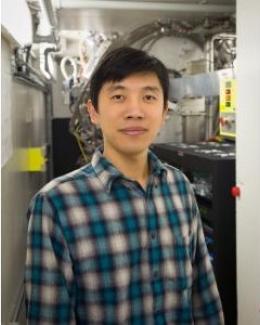Abstract
The mobility of H2 confined in microporous carbon was studied as a function of temperature and pressure using inelastic neutron scattering, and the translational and rotational motion of H2 molecules has been probed. At low loading, rotation of H2 molecules adsorbed in the smallest carbon pores (~6 Å) is severely hindered, suggesting that the interaction between H2 and the host matrix is anisotropic. At higher loading, H2 molecules behave as nearly free rotor, implying lower anisotropic interactions with adsorption sites. At supercritical temperatures where bulk H2 is a gas, the inelastic spectrum of confined H2 provides evidence of a significant fraction of immobile, solid-like hydrogen. The onset temperature for molecular mobility depends strongly on the loaded amount. The fraction of immobile molecules increases with pressure and attains a plateau at high pressures. Surprisingly, immobile H2 is present even at temperatures as high as ~110 K.
This research at ORNL’s Spallation Neutron Source was sponsored by the Scientific User Facilities Division, Office of Basic Energy Sciences, U. S. Department of Energy. This research was supported in part by the ORNL Postdoctoral Research Associates Program, administered jointly by the ORNL and the Oak Ridge Institute for Science and Education. CIC and NCG acknowledge support from the Materials Science and Engineering Division, Office of Basic Energy Sciences, U.S. Department of Energy.







